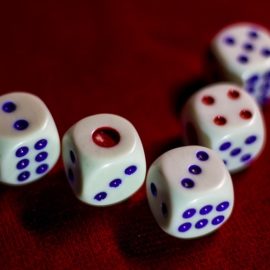

This article is an excerpt from the Shortform summary of "The Hero with a Thousand Faces" by Joseph Campbell. Shortform has the world's best summaries of books you should be reading.
Like this article? Sign up for a free trial here .
What is the “call to adventure” in the hero’s journey? What step in the hero’s journey is it?
In Joseph Campbell’s The Hero with a Thousand Faces, the call to adventure is the first stage of the 17 stages of the hero’s journey. It is during this stage that the hero discovers a hidden world of possibility.
We’ll cover the elements of the “call to adventure” stage of the hero’s journey and look at three examples.
The Call to Adventure (Hero’s Journey)
In the first part of the monomyth, we meet our hero, our “man of destiny,” and witness their call to adventure. The call to adventure in the hero’s journey can come about through chance, even a mistake or blunder, which introduces the hero to a hidden world of possibility, guided by mysterious forces which the hero will come to understand through the course of their journey.
A frequent device employed in mythology is that of the herald or conjurer, the (often unlikely) figure who reveals the hero’s destiny and spurs them to action. The herald represents our subconscious, wherein all of our darkest fears are hidden. They are forcing us to confront things that we do not want to. As such, the herald is frequently a grotesque or unpleasant-looking figure, like a frog or a beast, or otherwise some veiled, mysterious, or unknown figure.
The hero is fascinated by the arrival of the herald. The herald represents the first conscious manifestation of the world of the subconscious. The world which the hero has known suddenly becomes devoid of value or interest—mimicking the universal experience of growing out of childhood and into the trials and adventures of our adult lives. This is an important aspect of the call to adventure in the hero’s journey.
Sometimes the herald will reveal that the hero’s ultimate fate is to die, but in other cases the hero might be called upon to live for some higher purpose or reveal for humankind some grand religious awakening. In psychological terms, the hero is summoned to an awakening of the self, in which they will come face-to-face with their most suppressed fears and desires. But the journey will always represent a symbolic death and rebirth of the hero (and in some religious founding myths, like the famous crucifixion and resurrection of Christ, a literal death and rebirth). The hero has outgrown their old ideals and consciousness—these must be shed so that a new awakening can occur and a new threshold can be crossed.
King Arthur and the Hart
Here’s one example of the call to adventure in the hero’s journey. In Arthurian legend, King Arthur encounters a great hart (an archaic Old English term for a deer) in the forest. He gives chase to the animal, vigorously riding his horse until it dies from exhaustion. Arthur then comes to a fountain, where he sets down his dead horse and becomes lost in deep thought.
While he’s sitting at the forest fountain, he hears what sounds like dozens of hounds coming toward him. But, it is not hounds—instead, it is some strange beast, the likes of which the King had never seen before. The noise of 30 hounds barking and snarling emanate from its stomach, although there is no noise while the beast drinks at the fountain. Arthur marvels at this sight: this is his herald, his signal to begin his quest.
The Arapaho Girl and the Porcupine
Another example of the call to adventure in the hero’s journey is that of the myth of the Arapaho. We also see the herald motif in a myth from the Arapaho, a Native American people who lived in what is now Colorado and Wyoming. One day, an Arapaho girl sees a porcupine near a tree. Seeking its quills, she tries to attack it, but it runs away, scurrying up the tree. The girl chases the porcupine up to the very top of the tree, but when she reaches the top, the tree lengthens and the porcupine keeps climbing up, out of her reach.
Her friends beg her to come down to safety, but it is too late—the girl is on her quest now, under the influence of the porcupine. She continues to chase the porcupine, high up into the clouds, becoming barely visible to the onlookers below. The chase of the porcupine is the girl’s first step on her adventure.
Future Buddha and the Old Man
In the story of the Buddha, we see one of the world’s most famous calls to adventure of the hero’s journey. The young prince Gautama Sakyamuni (Future Buddha) has been shielded from all knowledge of age, sickness, and death since the time of his birth—the father wants his son to assume the duties of the kingdom and not to be distracted by lofty spiritual or philosophical ideas. He wants the prince’s mind to be squarely on the concerns and experiences of the physical world, even granting him three palaces and thousands of concubines to keep his focus on secular matters.
The gods realize that the time has now come for the Future Buddha to begin his enlightenment, so they decide to send him a sign. One day, the prince ventures out and encounters the gods in the form of a decrepit old man, something he’d never been allowed to see before. He returns home, distraught after learning that everyone and everything that lives must eventually grow old. He has the same reaction upon seeing the gods in the form of a sick man one day and a dead man the next. Each time, the king increases the security around his son, trying to censor what he sees.
Finally, one day, the prince sees a well-dressed monk, created and placed there by the gods. The prince’s charioteer tells him that this is someone who has retired from the world. The prince is intrigued by the idea of following this man’s example. Thus, the seeds have been planted for the prince’s spiritual journey and his ultimate transformation—his death and rebirth as the Future Buddha. These are examples of the call to adventure in the hero’s journey.
———End of Preview———

Like what you just read? Read the rest of the world's best summary of "The Hero with a Thousand Faces" at Shortform . Learn the book's critical concepts in 20 minutes or less .
Here's what you'll find in our full The Hero with a Thousand Faces summary :
- How the Hero's Journey reappears hundreds of times in different cultures and ages
- How we attach our psychology to heroes, and how they help embolden us in our lives
- Why stories and mythology are so important, even in today's world






